Out Of This World
It looked like something out of this world, there, at thousands of feet underwater.
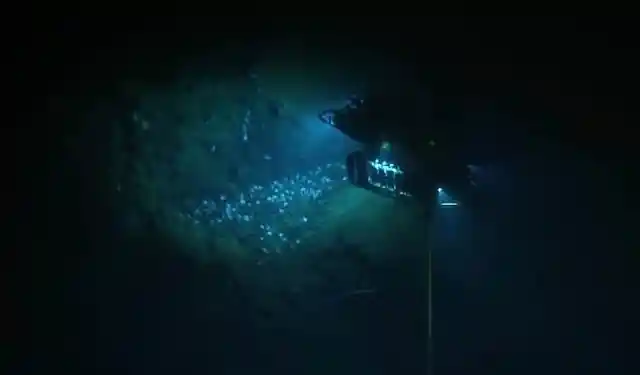
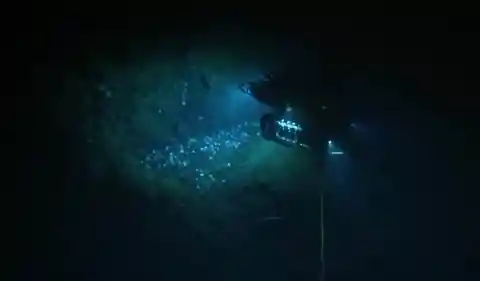
As the robot took a close up of that thing floating in the depths of the ocean, the people watching couldn’t contain their excitement... Of course it wasn’t a ghost…
Like A Ghost
At first glance, the thing looked like a ghost, but scientists realized they were actually looking at an animal that was similar to the cartoon elephant Dumbo!
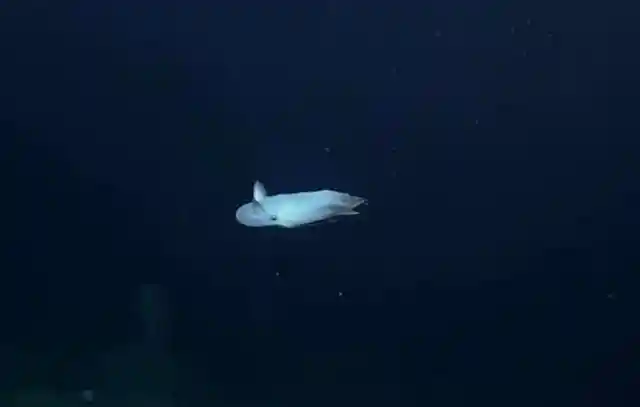
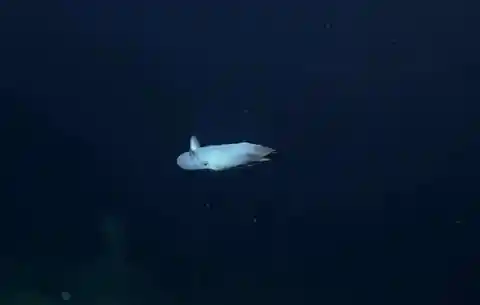
How did they get the idea? You can hear them explaining in their video which was posted on their YouTube channel. Here are some highlights of their conversation - #16.
Exploration Vessel (E/V) Nautilus
Before we talk more about this animal, let’s learn a thing or two about this exploration and its objectives. The 64-meter research vessel is leg by the Ocean Exploration Trust.


Their video, audio and data feed is live from the field. On their website, they wrote that they also “bring educators and students aboard during E/V Nautilus expeditions.”
Started In June
The year 2018 for the exploration is the fourth one in which Nautilus has documented the seafloor.
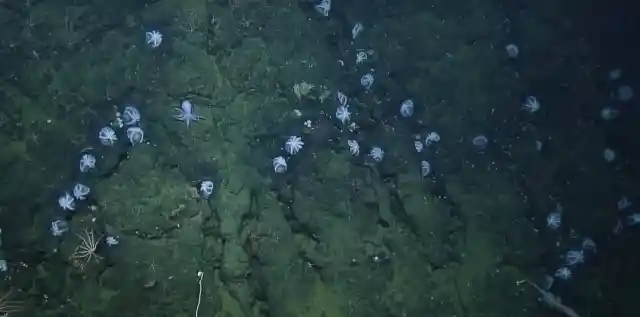
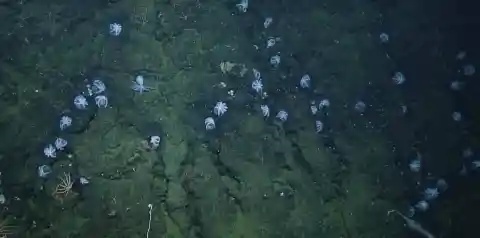
Starting with June and ending in November, the team has documented regions unexplored before on the coasts of British Columbia, Canada, the West Coast of the US, and West of the Hawaiian Islands.
ROV Hercules Spotted Dumbo
The camera was sending live footage from the ROV HERCULES to Nautilus as it was exploring the Davidson Seamount in Monterey Bay National Marine Sanctuary, which is off the coast of California.
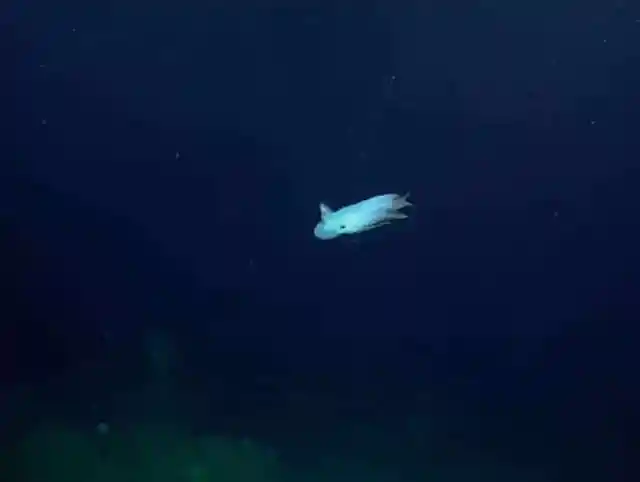
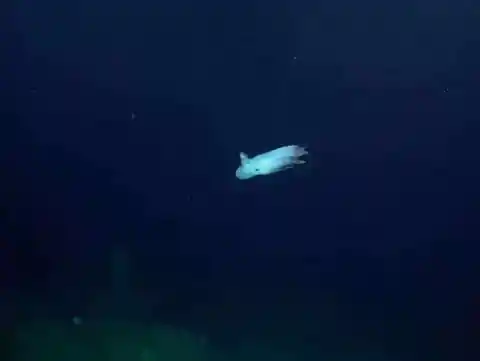
When they came across this creature, the scientists didn’t move to explore other things until they had to stop because the ship was getting to far from the robot…
A Little Octopus!
"Oh oh oh oh, look! We've got a little octopus up in the column there," exclaimed one of the scientist that were looking at the screen. Another scientist says: “That's a dumbo!"
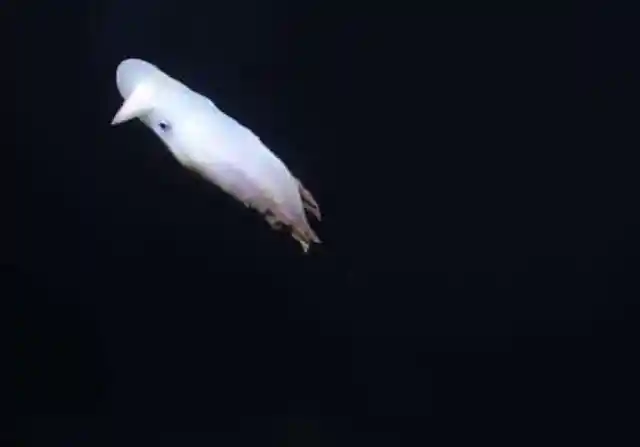
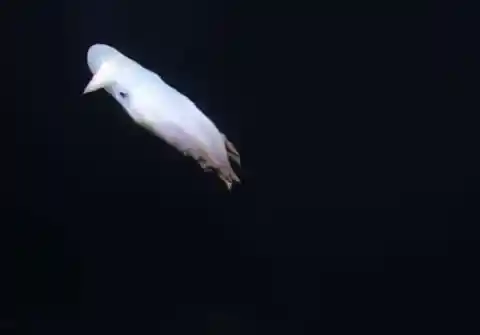
Then, you can hear another member of the team explaining the genus of the octopus, which made the entire team chuckle.
A Dumbo
"The world loves a dumbo," said another one. Then, a scientist explains that Dumbo is part of the genus Grimpoteuthis.
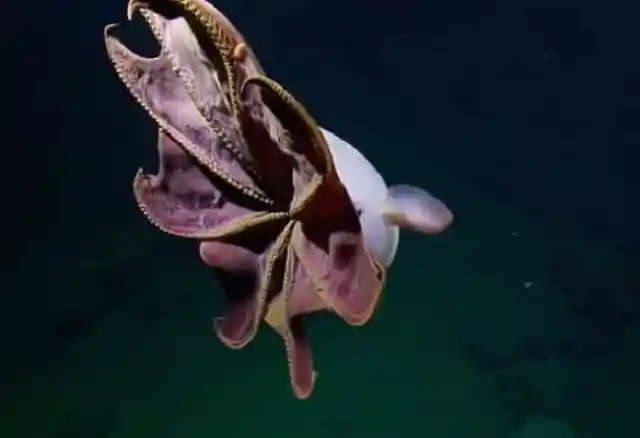
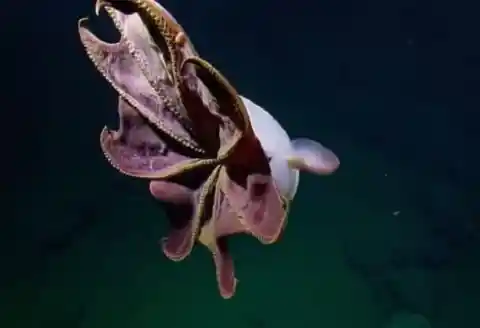
It has two small fins that look like Dumbo’s ears. As the Robot closely follows the octopus, scientists were in awe with its eerie beauty.
Grumpy Tooth
"Grumpy tooth?" another person asked laughing. And the highlight of this video is that the octopus started to swim, showing off his suckers and the body shaped like an umbrella.
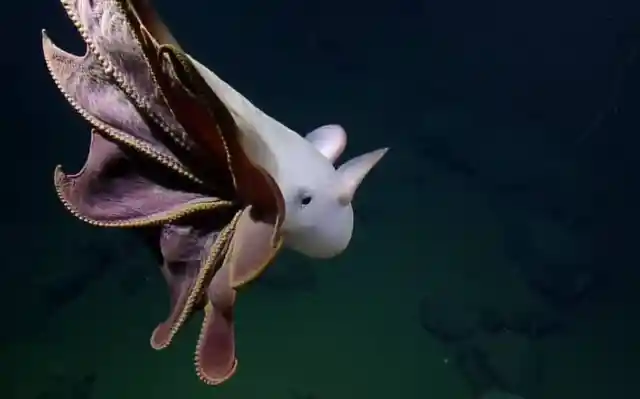
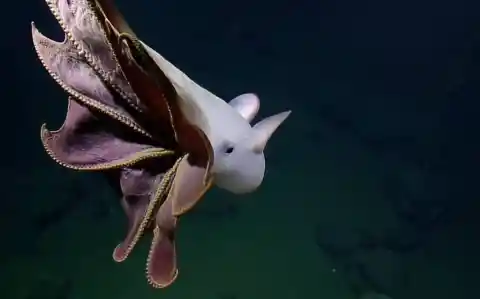
These octopus are not great looking, but they are very intelligent. Look at it swimming!
The Umbrella Octopus
We mentioned that this creature has an umbrella-like body, and that’s what makes it known as the umbrella octopus. It is a rarely seen octopus, and this one was almost 60 cm long!
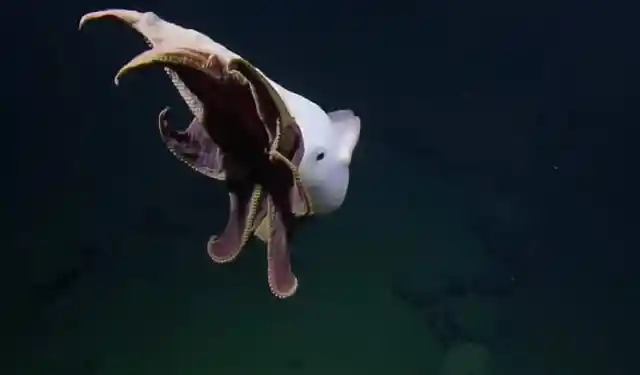
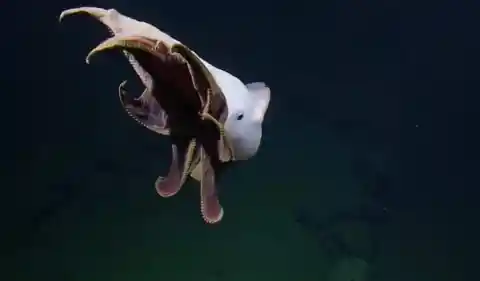
Then, one of the scientists said: “we've only got about 30 more seconds."
A Good Cephalopod
"I'll take every second I can get with this guy," another scientist said, while one concluded laughing: "I love me a good cephalopod!"
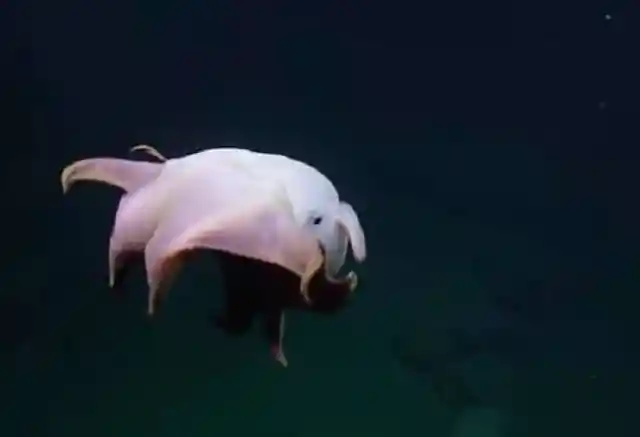
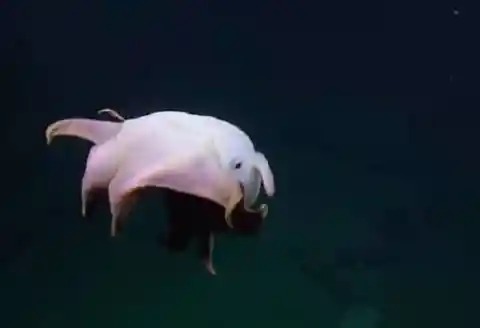
The chief scientist on that vessel, Chad King, said that this footage will be added to the library data and let experts study things like the behavior of octopus.
Spotted It
Thanks to Mr. King who actually spotted this octopus out of the corner of his eye as the team was remotely driving the underwater robot, we were able to witness this moment.
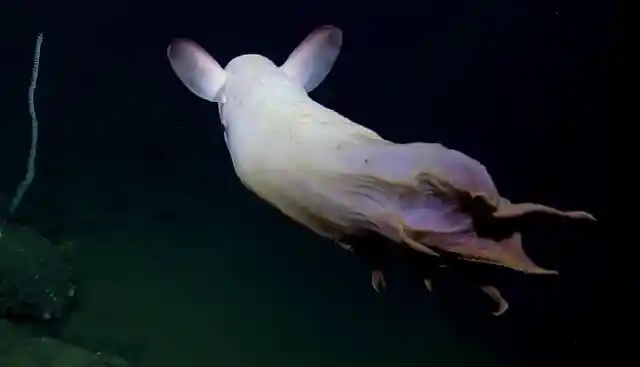
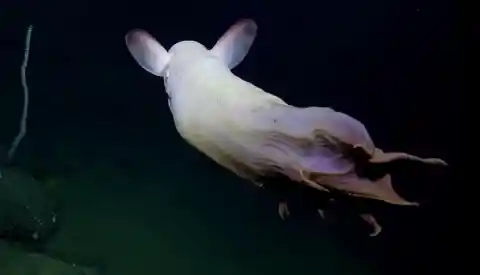
He said that: “Even though I’m a scientist, we’re all kids out here.”
Dumbo Octopus
King added that seeing the Dumbo octopus “elated [everyone] in the control area.”
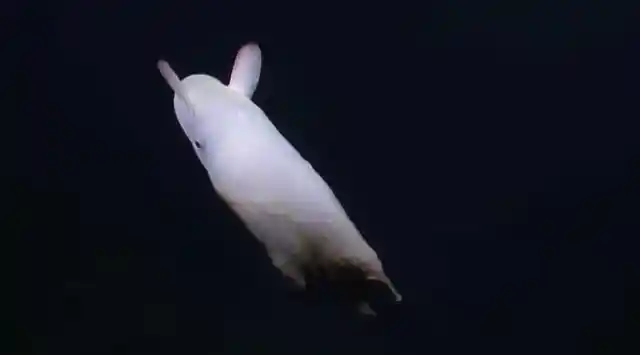
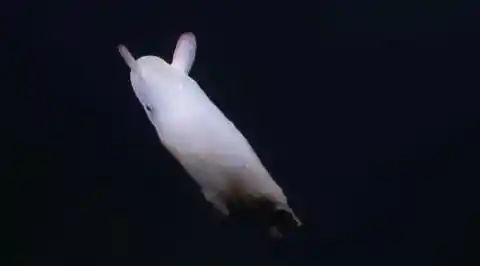
According to the team, this ghastly creature was gliding at almost 3.3 km deep in the ocean. The Aquarium of the Pacific website says that Dumbo octopus species are 20-30 cm long, and the longest one found was over 1.8 meters!
Not A Rare Species
King explained that this species is not rare, but “it’s rare to come across one,” because there are low chances to find one in the deep ocean “in one little spot.”
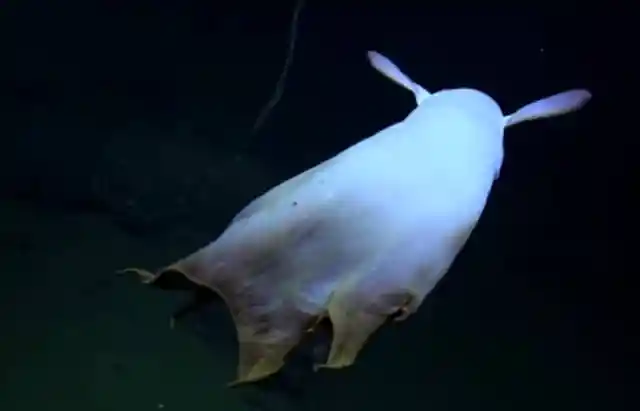
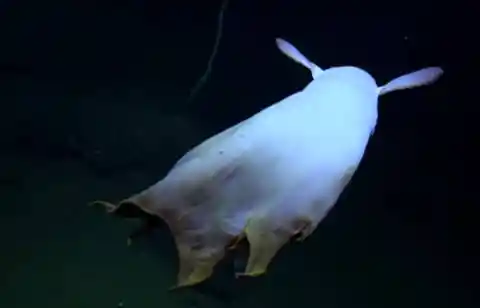
And now that we have all established that this octopus is cute as a button, let’s check out some weird stuff about it next!
That's Savage
The Deputy Director of the Plymouth University Marine Institute, Nicholas Higgs, said that this adorable little guy is quite savage, enveloping their prey with their arms, then making “a balloon around them, and then consume them.”
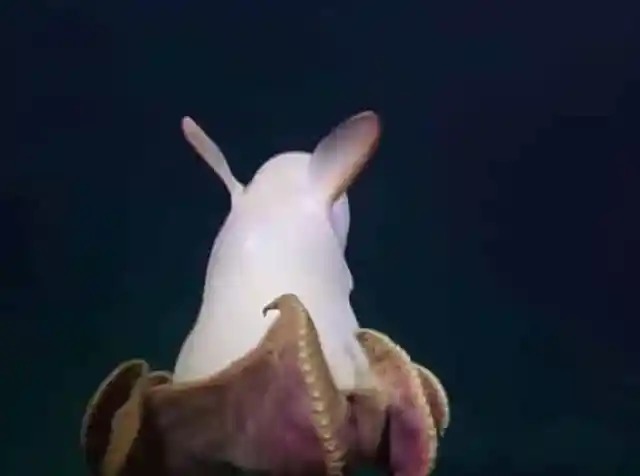
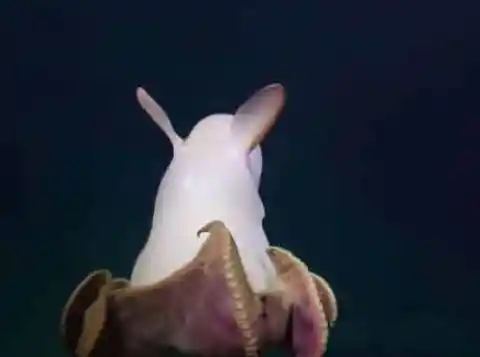
Mr. King explained that they had to move the robot…
Time To Go
“We had to move because of the length of the cable and where the ship was,” concluded Mr. King.
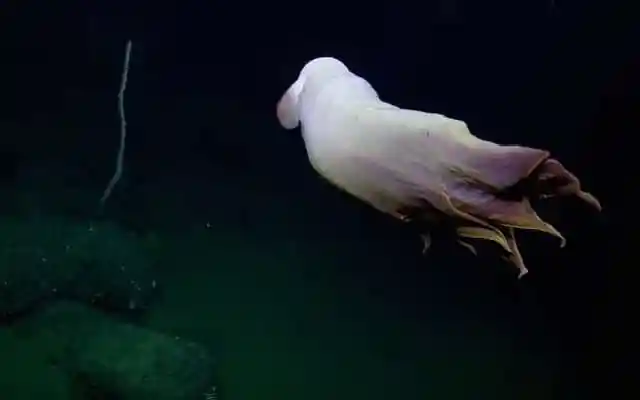
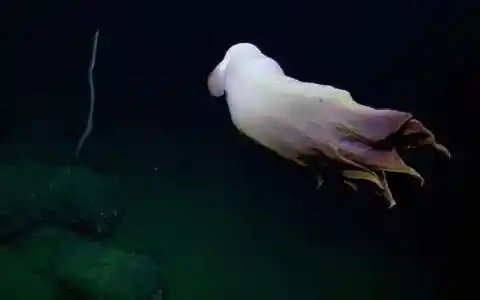
But the video did show how these guys move. They pulse their arms and shoot water through the funnel and use their ear-like fins too!
No Light
Because light doesn’t reach such a depth, dumbo octopuses have no pigmentation. In an environment with no light, it has no use.
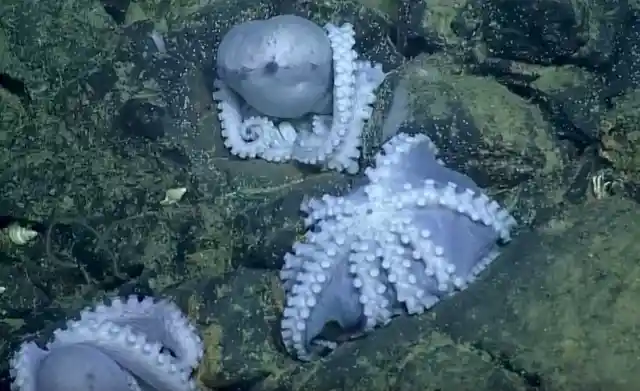
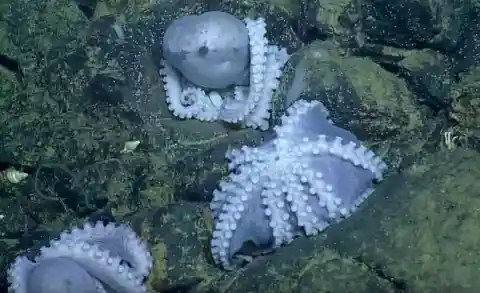
Also, this creature has large eyes that only detect bioluminescent flashes. Then, researchers stumbled upon these guys…
Over A Thousand Octopuses
In another video, the team that controlled the underwater robots discovered a massive aggregation of female octopus covering their eggs.
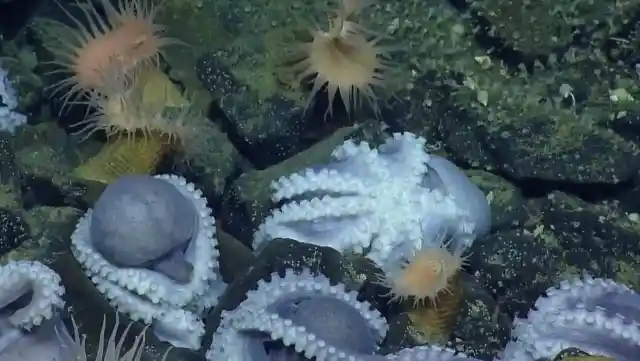
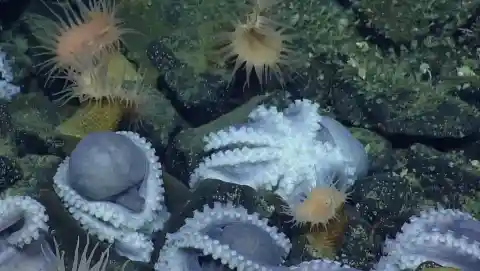
According to the scientists’ description of the video, the octopus was “were tucked into rocks near shimmering fluid seeps, which were previously unknown to occur in this region!”
Googly Eyes
The same team has also discovered this funny looking Stubby Squid which is scientifically called Rossia Pacifica. It looks like a cross between a squid and an octopus, but it’s a cousin of the cuttlefish.
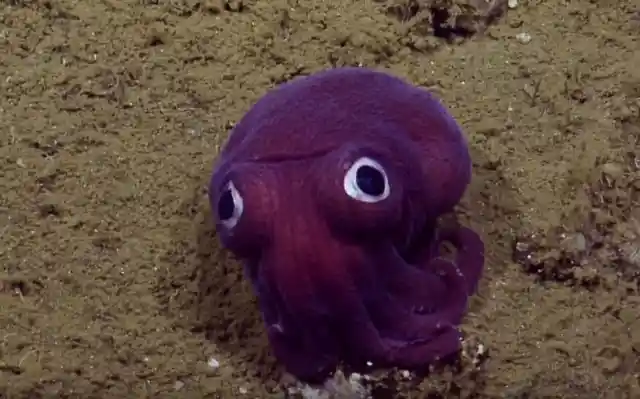
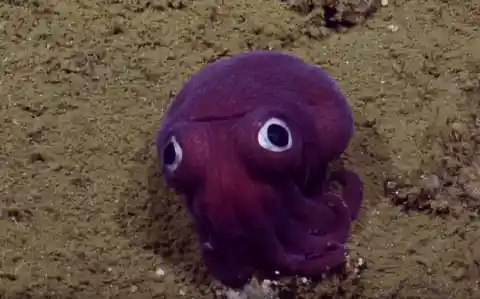
Those funny eyes poke out when it wants to spot prey like small fish or shrimp!
A Purple Orb!
While looking at the seafloor in NOAA Channel Islands National Marine Sanctuary, the team came across a purple orb that looked like a pleurobranch sea slug.
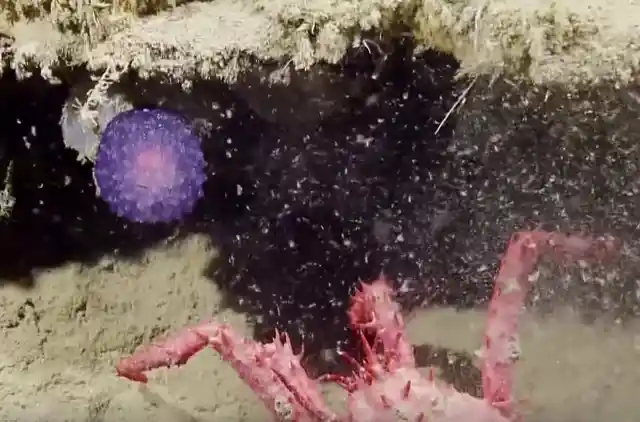
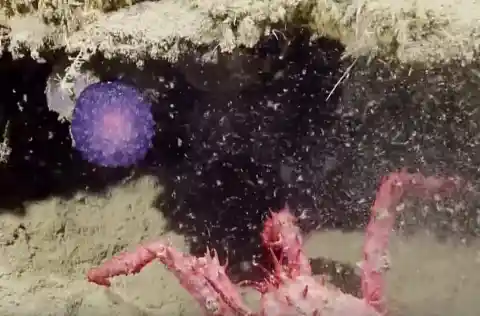
Information from the Harvard University Museum of Comparative Zoology helped them realize that they might have discovered a new species of velutinid – a type of snail!
The Ferocious Mouth
This weird looking fish is called Fangtooth and has quite a reputation!
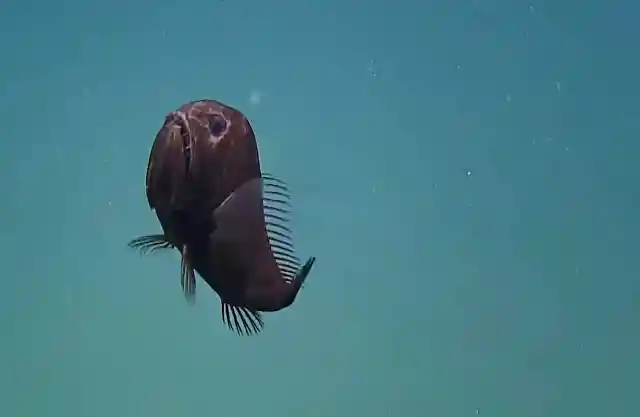
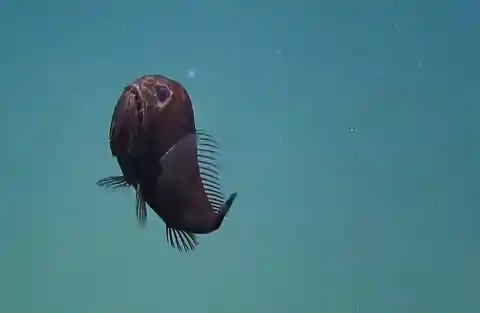
It has enough teeth to flash at the cameras, which he uses to catch those few meals in the deep sea and male sure that it won’t have a chance to get away!